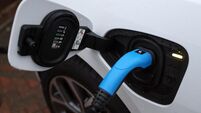ECB could be falling behind in keeping euro low

The European Central Bank’s own calculation of the single currency’s effective exchange rate, against a trade-weighted basket of 38 other currencies, shows it has risen faster than the more commonly tracked exchange rate, against the dollar.
Trade-weighted, the euro is at the highest level since early January last year, about three weeks before the ECB president officially announced his quantitative-easing programme.
Just measured against the dollar, the single currency is at its highest level in more than three months.
“Having succeeded in bringing the euro down sharply last year, the ECB has recently fallen behind in the race among global policy-makers to weaken their currencies, in order to boost growth and stave off deflation,” Jonathan Loynes, an economist at Capital Economics, wrote in a note to clients yesterday.
“While the ECB has always insisted that the currency is not a policy tool, it is clear that it needs to weaken the euro again, significantly, in order to meet its inflation target,” Mr Loynes said.
Mr Draghi has been struggling to revive inflation in the region, in the face of an oil slump.
But while cheap crude is a boon for consumers and boosts economic activity, a stronger currency might put pressure on exporters and take the wind out of the region’s weak recovery.
Since June, 2014, the ECB has resorted to negative rates, which can push down the exchange rate.
Policy-makers say they don’t target the exchange rate.
Markets fully price-in a further cut in March, which would push the rate to minus 0.4%.
“They are now forced to hint at larger cuts — potentially along with a two-tiered system for bank-reserves management — in order to put their money where their mouth is,” said Frederik Ducrozet, an economist at Banque Pictet, in Geneva, who tracks the gauge on a daily basis.
The ECB has recently revised the relative weights of the 38 currencies it tracks to calculate the effective exchange rate, boosting the importance of China’s renminbi.















